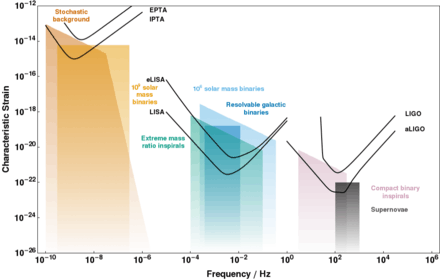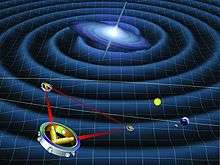Allegro gravitational-wave detector
| Location(s) | Louisiana State University |
|---|---|
| Telescope style | gravitational-wave detector |
Allegro was a ground-based, cryogenic resonant Weber bar, gravitational-wave detector[1] run by Warren Johnson, et al. at Louisiana State University in Baton Rouge, Louisiana. The detector was commissioned in the early 90's, and was decommissioned in 2008.
Mechanical design
The resonant bar in Allegro is 2300 kg of aluminum, 3 meters in length. Suspended in a cryogenic vacuum tank at 4.2 Kelvin, the bar's natural resonant frequency (the lowest longitudinal mode) is near 904 Hz.
The strain on the bar is measured by coupling a second, much lighter, suspended mass to the main heavier mass as a mechanical transformer at the same resonant frequency. Therefore, small motions of the primary mass generate much larger motions in the smaller mass. The differential displacement of the two masses is recorded using an inductive transducer and amplifier (a SQUID).[2]
Collaboration with LIGO
Due its close proximity to the LIGO Livingston Detector (one in the array of three, large-scale, laser interferometric detectors), Allegro has partnered with the LIGO Scientific collaboration to produce several results during the fourth science run of LIGO.[3]
References
- ↑ Mauceli, et. al, E. (July 1996). "The Allegro gravitational wave detector: Data acquisition and analysis.". Phys. Rev. D. 54 (2). doi:10.1103/PhysRevD.54.1264.
- ↑ McHugh, et. al, M. (2005). "Calibration of the ALLEGRO resonant detector.". Class. Quantum Grav. 22 (18). doi:10.1088/0264-9381/22/18/S10.
- ↑ Abbott, et. al, B. (July 2007). "First cross-correlation analysis of interferometric and resonant-bar gravitational-wave data for stochastic backgrounds.". Phys. Rev. D. 76 (022001). doi:10.1103/PhysRevD.76.022001.

